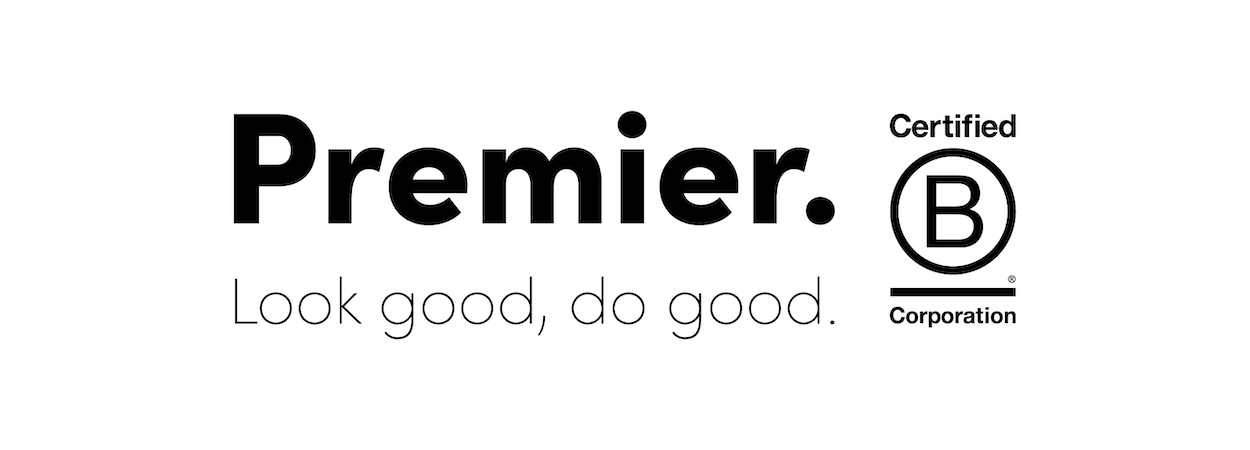Ryan's B Corp Ramblings
Since achieving B Corp certification, we have been flooded with questions and enquiries from others dipping their toes in the B-Corp pond.
So here’s the honest ramblings of someone who’s no expert, but that’s been there and done it.
Let me just preface this, in case anyone from B Lab is reading, that Premier genuinely tries to do a little bit of good in everything we do.
We’re not saints, bunny huggers, hippies, or orange t-shirt-wearing lunatics. But we do care about our people, we do care about our supply chain, we do care about our community, and we do care about the environment. From a personal perspective, as a father to an 11-year-old, I do feel a responsibility to protect the planet for future generations. But I still ride motorcycles, eat steak, fly long-haul and drink from single use plastic bottles when there’s no other option.
We eventually decided to attempt certification to bring credibility and structure to all the good things we were already doing. Consequently, it wasn’t quite as hard as I was led to believe it might be.
Why go for B Corp?
There are many alternatives to B Corp. And many complimentary accreditations. All, B Corp included, have biases in particular impact areas such as sustainability, compliance or supply chain working conditions. SMETA, Ecovadis, Amfori, 1% for the planet, UNSDGs, SBTi, Carbon Neutral to name a few. Which one you chose will depend on your strategy, your mission, your market and your offering.
With companies like Ben & Jerry’s, Patagonia and Etsy joining the B Corp community and the converted B logo becoming a household name, for Premier, B Corp was the logical step.
Where to start in your B Corp Application?
Certification is based on a points system called the BIA or B Impact Assessment. It forms the backbone of the whole audit process. Answers can be worth as little as 0.1 points. You need a minimum of 80 points to submit your assessment. Expect to lose a couple during assessment – so build in some redundancy.
The BIA is free to start. And editable. So by whipping through it you’ll get an early indication of where you are. It also gives you a good idea of where the gaps are, and where you can win some easy extra points. You can then revisit, update answers, and see the impact on your score.
Is it difficult to achieve B Corp?
It depends on your starting point, skill set, and level of patience.
It’s no secret the assessment and audit process are arduous. But for good reason. And for me, the value is in the fact that certification is earned, not blagged.
Prior to setting our sights on B Corp, we had spent a couple of years getting our sh*t together. Investing time, money and focus on governance, staff, charity work, supply chain, policy, and more. Conveniently, that ended up ticking a lot of boxes. And without that, scoring points would have been much more difficult.
How long does B Corp certification take?
B Lab to their credit, are pretty transparent about wait times, backlogs, and queues. Its all on their site to find. Once you’ve submitted the progress tracking is quite intuitive too. But be prepared to wait. Be prepared to put in a load of work, then forget about it for a month or two. And expect comms to take days or weeks, not hours.
In our case, we spent around 3 months completing the BIA and providing evidence. (in addition to the work we’d put in over the previous 2 years). It took 13 months to certify. Some weeks and months required no input, others were almost a full-time job. I’d estimate I spent 20-30 full days over the period working purely on certification. That’s not including the time spent preparing the supporting evidence.
How much does it cost to get B Corp?
Submission costs us £250. Upon certification the annual cost is based on turnover and available on the B Corp UK website.
Certification lasts 3 years, at which point you must resubmit.
A big lump of points (and a prerequisite) is “Mission Lock”. In our case updating our articles of association objectives to include promoting a positive impact on society and the environment. Legal fees were quoted in the region of £2500 for this, however it is possible to undertake these changes with Companies House as the director of the organisation.
In addition, we used a B Leader for 1.5 days. A B leader is essentially a consultant on certification. We paid £750 per day. In retrospect, it may have been unnecessary. But equally they are best placed to spot easy points and missed opportunities. If you’re sitting around 75 points, a B Leader can probably get you over the line. If you’re 90+, and feeling ballsy, then I probably wouldn’t bother.
Putting man-hours aside, the unexpected costs came in the form of frameworks and solutions to capture data required to evidence answers. For example, collating and certifying GHG emissions, ISO 9001 and 14001, policy document creation, measuring and reporting waste streams or data analysis. Collectively these sundry costs exceeded the charges from B Lab.
What I learned?
It is clear the BIA and qualifying criteria is geared to a global audience. As such, some of the questions, when working according to British rules and regulations, are slightly odd.
There is a fairly hefty list of industries that B lab consider as “controversial”. Again, from a global perspective this may be justifiable, locally though, some can be a bit more difficult to fathom. It is worth reviewing this list early doors, because if your organisation relies on any of these for any significant trade, you may immediately discount yourself.
The BIA was useful in identifying weaknesses in our business, ways to improve, and areas where things taken for granted or assumed needed formalising.
Some of the questions are open to a little interpretation and in some instances, it is worth being creative with the evidence to see if it passes muster. In my experience some potentially dubious stuff sailed through when what I assumed would be an easy win got pulled.
Was it worth it?
Yes.
Personally, having done the majority of the application, getting certified was very gratifying. Achieving certification and rubbing shoulders with the likes of Innocent, Body Shop and Gusto feels like a great achievement.
As MD, I’m proud of what it represents. Proof that we have a positive impact on our staff’s lives, that of our customers, our suppliers, our community, and the environment. Regardless of the arguments against B Corp, you don’t get this certification by being fake good, blagging it or telling porkies.
From a sales perspective it has helped us retain work when buyers review their supply chain. It has won us new custom that we may not have done otherwise. It has also created conversation with existing customers.
From a recruitment perspective, having a recognisable and credible certification has attracted more and greater quality applicants.
Whilst, financially, this process will have easily paid for itself, the intangible benefits are, in my opinion, much greater.
Premier. Look good, do good.
Ryan Askew. MD. Premier.
Email me: Ryan@premierpandp.com








